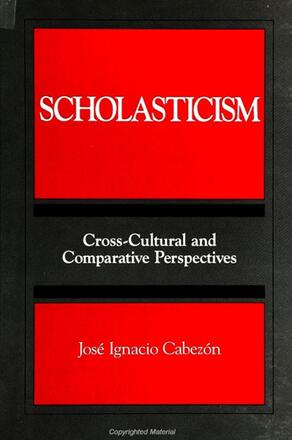
Scholasticism
Cross-Cultural and Comparative Perspectives
Alternative formats available from:
Leading scholars in the field of religious studies show that scholasticism as a comparative category is useful in the analysis of a variety of religious and philosophical traditions and even in the task of cultural criticism.
Description
Leading religious studies scholars join forces in this book to show that scholasticism as a comparative category is a useful tool in the analysis of a variety of religious and philosophical traditions, and even in the task of cultural criticism. The discussions range from explorations of Latin, Jewish, and Muslim modes of scholastic thought to examinations of their counterparts in India, Tibet, China, and contemporary Euro-American academic culture.
The contributors consider the heterogeneous nature of traditions generally, and of scholastic traditions in particular, by demonstrating the rich, internal texture that is the result of the historical interaction of different religious and philosophical schools. They also explore what it means to construct a comparative category like scholasticism by applying it sensitively and dialogically to a variety of religious and intellectual movements across cultures.
Focusing thematically on scholasticism, the book offers detailed reflections regarding its relevance to a variety of traditions (Hindu, Confucian, Taoist, Buddhist, Jewish, Islamic, and Christian). But while grounded in the rich, historical particularity of these various religions and cultures, the volume also makes a considerable contribution to theory. The contributors are committed to a form of analysis that balances "similarities" with "differences," one that also does not disregard either the diachronic element or the relevance of the social-material evidence. By offering a nuanced and sophisticated treatment of the problematics of constructing a comparative category like scholasticism, this volume represents a major contribution to the comparative philosophy of religion. With its breadth of scope and its richness of both historical detail and theoretical insight, the book will interest a wide audience ranging from medievalists to historians of religion, from philosophers to cultural critics.
Jose Ignacio Cabezon is Associate Professor of the Philosophy of Religion at Iliff School of Theology. He has written and edited several books, among them Buddhism and Language: A Study of Indo-Tibetan Scholasticism; Buddhism, Sexuality and Gender; and A Dose of Emptiness: An Annotated Translation of the sTong thun chen mo of mKhas grub dGe legs dpal bzang, all published by SUNY Press.
Reviews
"…wide-ranging … and thought-provoking …" — Bulletin of the School of Oriental and African Studies
"I believe that this book is bringing a new approach to an important field, which has been seen too exclusively in Western terms. Despite the diversity of contributors, the book succeeds in creating an overall sense of a unified topic, the exploration of scholasticism across cultural borders. It manages quite well to draw the reader into the intricacies of the different traditions without losing sight of the overall purpose. There is also an internal argument within the book that keeps the interest of the reader and provides a great deal of insight into the topic. " — Georges Dreyfus, Williams College